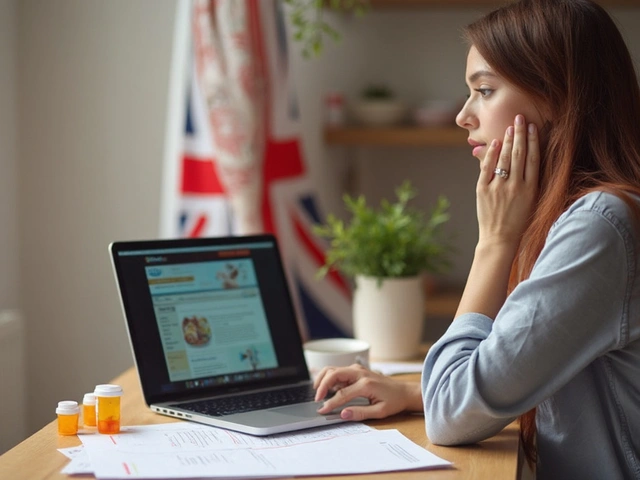Understanding Premenstrual Dysphoric Disorder (PMDD)
Premenstrual Dysphoric Disorder, commonly known as PMDD, is a severe form of premenstrual syndrome (PMS) that affects around 5% of menstruating women. PMDD is characterized by intense emotional and physical symptoms that occur during the one to two weeks before a woman's period. These symptoms can significantly impact a woman's daily life, interfering with her relationships, work, and overall well-being.
The emotional symptoms of PMDD may include irritability, mood swings, anxiety, depression, anger, and difficulty concentrating. Physical symptoms can range from headaches and bloating to breast tenderness and fatigue. While the exact cause of PMDD is not well understood, it is believed to be related to hormonal changes that occur during the menstrual cycle.
Fluoxetine: An Overview of the Antidepressant
Fluoxetine is a selective serotonin reuptake inhibitor (SSRI) antidepressant that has been widely used to treat various mental health conditions, including depression, obsessive-compulsive disorder (OCD), panic disorder, and bulimia nervosa. It works by increasing the levels of serotonin, a neurotransmitter that plays a crucial role in regulating mood, in the brain.
One of the reasons fluoxetine is commonly prescribed for PMDD is its ability to help alleviate the emotional symptoms, such as depression, anxiety, and mood swings. By balancing serotonin levels in the brain, fluoxetine can help improve mood and overall well-being during the premenstrual phase.
How Fluoxetine Can Help Manage PMDD Symptoms
Studies have shown that fluoxetine can be highly effective in managing the emotional symptoms of PMDD. In fact, fluoxetine was the first medication to receive U.S. Food and Drug Administration (FDA) approval specifically for the treatment of PMDD. Its effectiveness in treating PMDD has been well documented, with many women reporting significant improvements in their mood and overall quality of life.
Fluoxetine can help alleviate the depression, anxiety, and irritability that often accompany PMDD, making it easier for women to cope with the challenges they may face during this time. Additionally, some women may find that fluoxetine helps with certain physical symptoms, such as headaches and fatigue, further improving their overall well-being.
Dosage and Treatment Guidelines for Fluoxetine in PMDD
The dosage of fluoxetine prescribed for PMDD may vary depending on the individual's needs and the severity of their symptoms. Typically, a lower dose of fluoxetine is prescribed initially, and this can be gradually increased if necessary. The recommended dosage for PMDD ranges from 20mg to 60mg per day.
There are two ways to take fluoxetine for PMDD: continuous dosing and intermittent dosing. Continuous dosing involves taking the medication every day, while intermittent dosing involves taking it only during the premenstrual phase, typically starting 14 days before the expected start of menstruation and stopping when the period begins. The best approach will depend on the individual's specific needs and should be determined in consultation with a healthcare provider.
Possible Side Effects and Precautions
As with any medication, there are potential side effects to consider when taking fluoxetine for PMDD. Common side effects may include nausea, dizziness, drowsiness, insomnia, and dry mouth. In most cases, these side effects are mild and temporary, but it's important to discuss any concerns with your healthcare provider.
Fluoxetine interacts with several other medications, so it's crucial to inform your healthcare provider of any other medications you are currently taking. Additionally, if you are pregnant, breastfeeding, or planning to become pregnant, discuss the potential risks and benefits of taking fluoxetine with your healthcare provider.
Seeking Support and Additional Treatment Options
While fluoxetine can be an effective treatment option for managing PMDD symptoms, it's important to remember that it may not be the right choice for everyone. If you're struggling with PMDD, it's crucial to work closely with your healthcare provider to find the best treatment plan for your specific needs.
In addition to medication, there are various other treatment options available for PMDD, such as lifestyle changes, therapy, and alternative treatments like acupuncture and herbal supplements. By exploring different approaches and seeking support from healthcare professionals, friends, and family, you can find the best way to manage your PMDD symptoms and improve your overall well-being.







aishwarya venu
May 9, 2023 AT 07:48